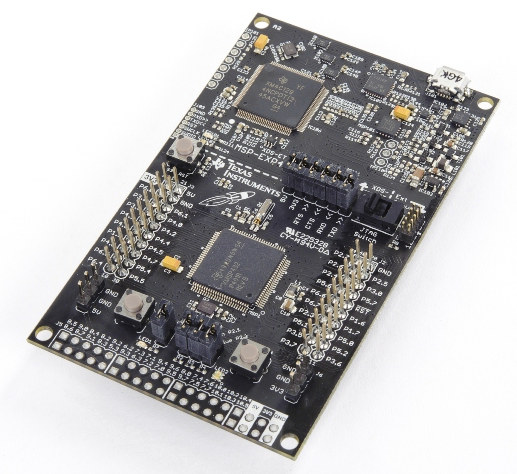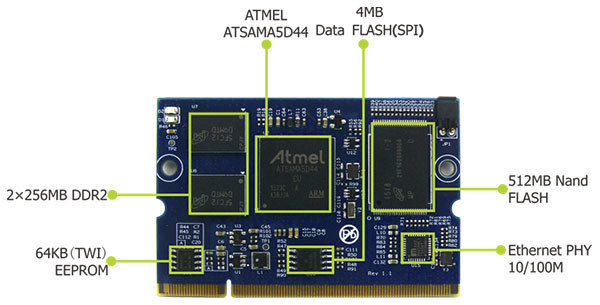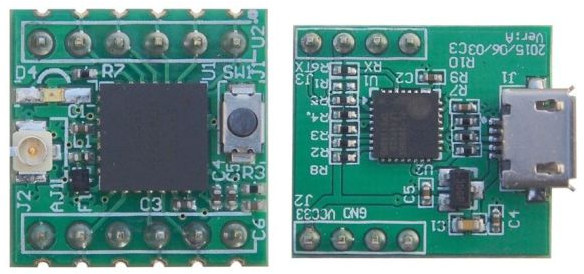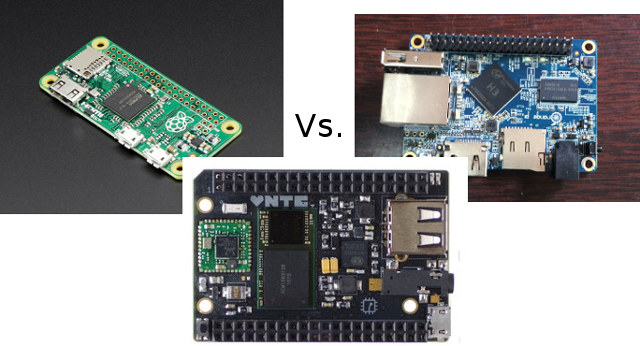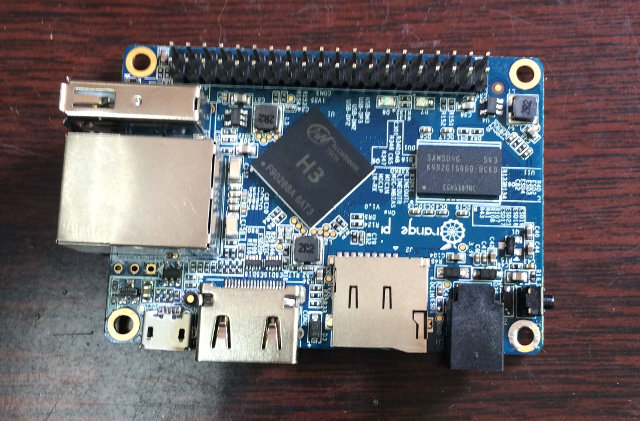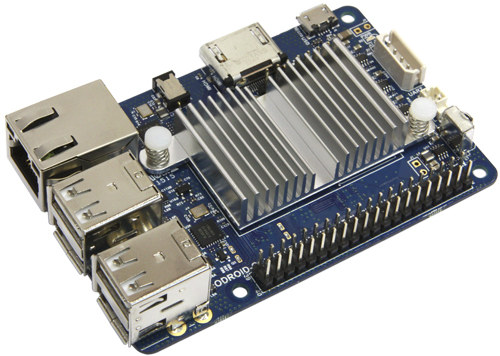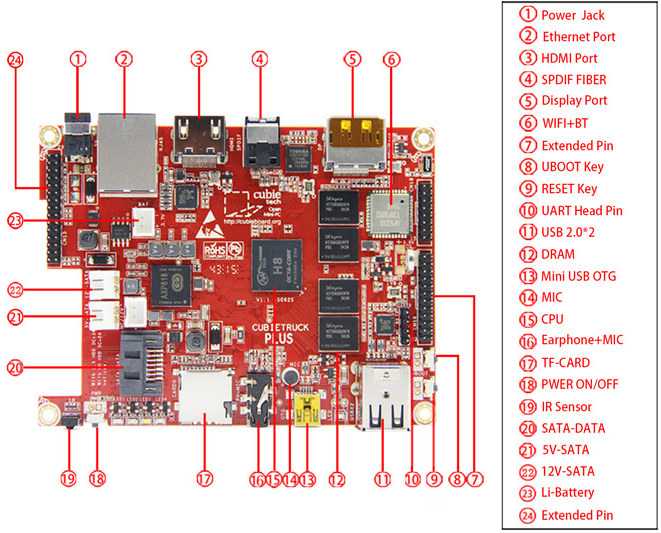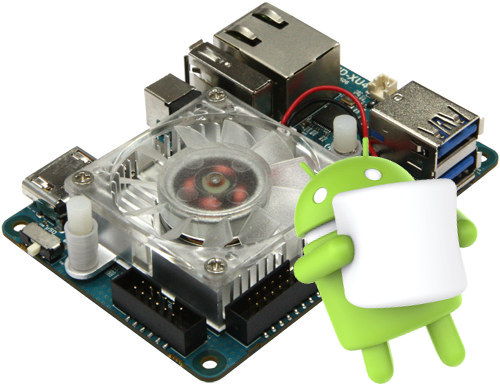Texas Instruments has started the year by offering a deal on their 32-bit MSP432 LaunchPad Development Kit, dropping the cost from $12.99 to $4.32 for a limited time with coupon code 432@432. MSP432 Launchpad’s key features: MCU – Texas Instruments MSP432P401R ARM Cortex M4F MCU @ 48 MHz with FPU and DSP, 256KB flash, 64KB RAM Expansion – 40 pin BoosterPack Connector, and support for 20-pin BoosterPacks Misc – 2 buttons and 2 LEDs for user interaction Debugging – Back-channel UART via USB to PC, Onboard XDS-110ET emulator featuring EnergyTrace+ Technology Power – Micro USB connector The kit includes the board, micro USB cable and a quick start guide. There’s plenty of technical documentation for the board, although for some unknown reasons, I can’t download any PDF documents from TI website tonight. The coupon is still working, but free shipping on TI eStore seems to be a thing of the […]
MYiR Tech Introduces Atmel SAMA5D4 CPU Module and Development Board
MYiR Tech has launched a new development board – MYD-JA5D4X – featuring their Atmel SAMA5D4 Cortex A5 system-on-module called MYC-JAD5D4X with 512MB DDR2, 512MB Flash, and various ports such as Fast Ethernet, RS485, LCD panel interface, USB connectors and so on. Target applications include control panel/HMI, fitness equipment, smart grid infrastructure, communications gateways, and imaging terminals among others. Let’s start wit the MYC-JAD5D4X CPU module specifications: SoC – Atmel SAMA5D42 or SAMA5D44 ARM Cortex-A5 processor @ up to 600MHz (945DMIPS) with NEON and FPU, 720p hardware video decoder (SAMA5D44 only) System Memory– 512MB (2x 256MB) DDR2 SDRAM Storage – 512MB NAND Flash, 4MB Data Flash, 64KB EEPROM Connectivity – On-board Ethernet PHY I/Os via 200-pin SO-DIMM edge connector 2 x Ethernet 3 x USB2.0 Host 8 x Serial ports 4 x TWI, 3 x SPI 5 x 12-bit ADC 1 x SMD 4 x 4-bit SDIO 1 x LCD 1 x ISI 7 […]
NavSpark mini is a $6 Arduino Compatible GPS Board
One person asked me whether any of the low cost boards in my Raspberry Pi Zero vs CHIP vs Orange Pi One comparison post came with GPS, and the answer is not without some external hardware. The only low cost boards with GPS I could think of were LinkIt ONE and NavSpark. I wrote about the latter over 2 years ago when the board launched via a crowdfunding campaign, so I went to the update page to find out more about the current status, and found two updates made in the last 6 months, including one about Navspark mini, a tiny board with GPS support, removing the USB port and having fewer I/Os compared to its older brother. NavSpark mini specifications: MCU – Skytraq Venus828F 32bit LEON3 Sparc-V8 MCU @ 100MHz with IEEE-754 Compliant Floating Point Unit, 1024KB Flash Memory, and 212KB RAM GPS 167 channel Venus 8 engine Uses […]
Raspberry Pi Zero, C.H.I.P, and Orange Pi One Boards’ Features and Price Comparisons
With Raspberry Pi Zero, Next Thing C.H.I.P, and Orange Pi One, we now have have three ARM Linux development boards selling (now or soon) for less than $10 excluding shipping and taxes. So I’d think it would be interesting to compare the features of the boards, and prices for different use cases. The comparison table below shows the three boards features side-by-side with items highlighted in green for the best or extra features, and in red for the weakest. Some cells will have to be filled later as data is currently not available (marked TBD). Raspberry Pi Zero C.H.I.P Orange Pi One Processor Broadcom BCM2835 single core ARM11 processor @ 1GHz (~1250 DMIPS) Allwinner R8 Cortex A8 processor @ 1 GHz (2000 DMIPS) Allwinner H3 quad core Cortex A7 processor @ 1.2 GHz (4x 2280 DMIPS) GPU VideoCore IV ARM Mali-400 ARM Mali-400MP2 Video Decoding 1080p30 for H.264, MPEG2* and […]
Orange Pi One is a $10 Quad Core Board with Ethernet and HDMI
Until recently, Orange Pi PC was probably the most cost efficient ARM hardware, but with the launch of Raspberry Pi Zero, and to some extent C.H.I.P computer, they had some competitors in the ultra low cost space, so Shenzhen Xunlong Software developed two more cost effective Orange Pi boards, with Orange Pi One selling for $9.99 with Ethernet, and Orange Pi Lite for $12 with WiFi, also referred to as versions B and A. Orange Pi One & Lite (preliminary) Specifications: SoC – Allwinner H3 quad core Cortex A7 @ 1.2 GHz with an ARM Mali-400MP2 GPU up to 600 MHz System Memory – 512 MB DDR3 Storage – micro SD card slot Video & Audio Output – HDMI Connectivity Orange Pi One – 10/100M Ethernet Orange Pi Lite – WiFi USB Orange Pi One – 1x USB 2.0 host ports, 1x micro USB OTG port Orange Pi Lite – […]
ODROID-C2 Amlogic S905 Development Board is in the Works
Hardkernel ODROID-C1 and later ODROID-C1+ boards, both based on Amlogic S805 SoC, have been a popular alternatives to Raspberry Pi 2 board this year. But now that Amlogic S905 quad core 64-bit ARM Cortex A53 processor has been available for a few months, people have been wondering whether the Korean company would launch an Amlogic S905 board, and it looks like ODROID-C2 might not be too far off based on firmware files on odroid.in website. The firmware includes a device tree file, which combined with other files give some clues about ODROID-C2 specifications: SoC – Amlogic S905 quad core Cortex A53 processor @ up to 2.0 GHz with penta-core (3+2) Mali-450MP GPU System Memory – 1GB RAM (in doc), 2GB RAM (in Device tree) Storage – 1x micro SD card Video Output – 1x HDMI out USB – 1x USB hub, 1x USB OTG I don’t have much more information […]
CubieTruck Plus Development Board with DisplayPort & HDMI Sells for $84 (in China)
We first found out about CubieTruck Plus (aka Cubieboard 5) this summer, and while at the time we did not have the full details, it was clear from the board picture and name, that is was an update to CubieTruck board, replacing Allwinner A20 dual core processor by Allwinner A8 octa-core processor, and ditching the VGA port for DisplayPort while keeping most of the same features of the original version. The company has now provided more details while announcing the launch of the board in China, and it turns out CubieTruck Plus has a few more advantages, and at least one drawback. CubieTruck CubieTruck Plus SoC Allwinner A20 Allwinner H8 CPU Dual core Cortex A7 up to 1.08 GHz Octa core Cortex A7 up to 2.0 GHz GPU Mali-400MP2 PowerVR SGX544 up to 700 MHz Memory 2GB DDR3 Power 5V@2.5V power jack Ethernet Gigabit Ethernet (RJ45) WiFi 802.11 b/g/n (2.4 […]
Hardkernel ODROID-XU4 Development Board Now Supports Android 6.0 Marshmallow
Android 6.0 source code was released in October, but so far few development boards are supporting it properly. There’s Android 6.0 for Raspberry Pi 2, but without GPU hardware acceleration is not really usable, and Intrinsyc Open-Q 820 board that will start shipping in a few days with Android 6.0 on Qualcomm Snapdragon 820 processor, is pricey and with limited availability. So there are only two options that I’m aware of LeMaker Hikey with Android 6.0 as part of the Reference Platform Release 2015.12, and Hardkernel ODROID-XU4 with an unofficial port for Android 6.0.1 Marshmallow by voodik odroid community member, which should also work for ODROID-XU3 and XU3 Lite boards. Despite being an alpha version, the current image looks pretty good, as most required features seem implemented: Android 6.0.1 Lollipop Cyanogenmod 13.0 with Linux kernel 3.10.9 OpenGL ES 1.1/2.0/3.0 (GPU acceleration) OpenCL 1.1 EP (GPU acceleration) Multi-user feature is enabled […]


